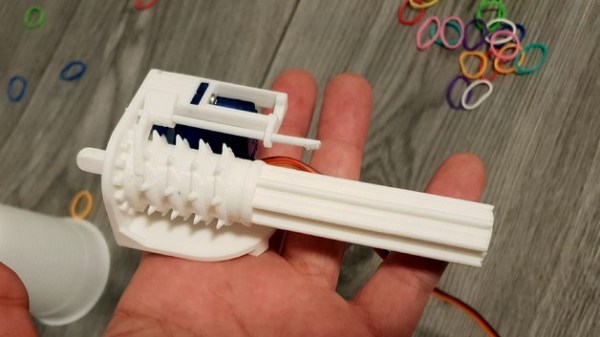What better way to count down the last 7 weeks to a big hacker camp like SHA2017 than by embarking on a last-minute, frantic build? That was [Yvo]’s thought when he decided to make a life-sized version of the adorably lethal turrets from the Valve’s Portal video games. Since that build made it to the finish line back then with not all features added, he finished it up for the CCC camp 2019 event, including the ability to close, open, target and shoot Nerf darts.
Originally based on the miniature 2014 turret (covered on Hackaday as well), [Yvo] details this new project in a first and second work log, along with a detailed explanation of how it all goes together and works. While the 2017 version took a mere 50 days to put together, the whole project took about 300 hours of 3D printing. It also comes with four Nerf guns which use flywheels to launch the darts. The wheels are powered using quadcopter outrunner motors that spin at 25,000 RPM. The theoretical speed of a launched dart is over 100km/h, with 18 darts per gun and a fire rate of 2 darts per second.
The basic movement control for the system is handled by an Arduino Mega, while the talking and vision aspects are taken care of by a Raspberry Pi 3+, which ultimately also makes the decisions about how to move the system. As one can see in the video after the link, the system seems to work pretty well, with a negligible number of fatalities among company employees.
Though decidedly not a project for the inexperienced tinkerer, [Yvo] has made all of the design files available along with the software. We’re still dubious about the claims about the promised cake for completing one of these turrets, however.
Continue reading “Locating Targets With Charm Courtesy Of A Life Size Portal Turret”

















